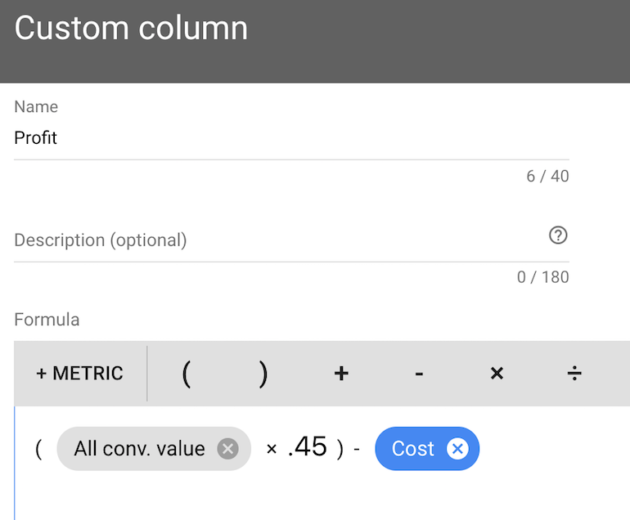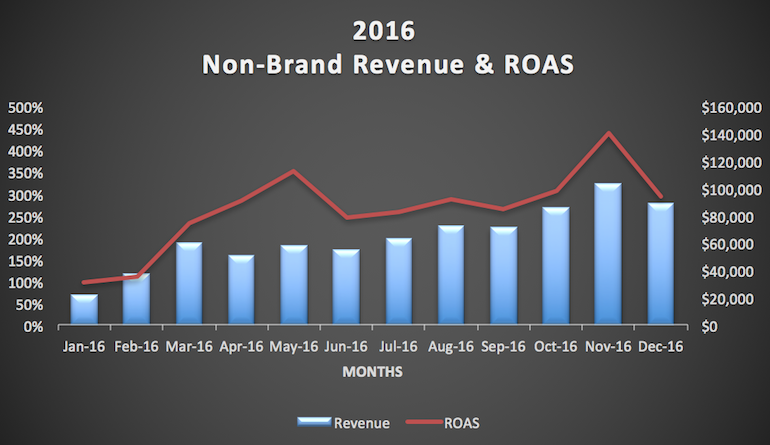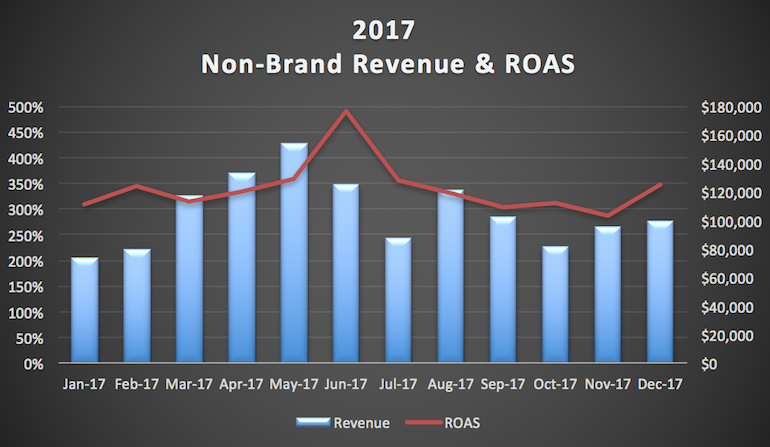The ultimate goal of most companies is to grow. How do we grow our brands? We increase the profitability of the company and strategically reinvest those profits into the company.
That means our #1 question as digital marketers should be, “How do I increase the profitability of our PPC campaigns?”
We often forget to step back and ask that question directly. However, we spend our days optimizing PPC campaigns in order to hit our goals which are (hopefully) based on increasing our brand’s profitability.
The reality is that we don’t often measure that profitability. We generally stop at our goal metrics like ROAS, CPL, or cost/conversion.
But why stop there when we could estimate the profitability of our campaigns?!
In my experience, tracking and optimizing towards estimated profitability is very effective for PPC e-commerce accounts. In this blog post, I’ll explain how I optimized towards estimated profitability for an ecom account and the resulting performance.
How Do We Measure The Profitability of Our PPC Campaigns?
First, we need to know the profit margin of our products. Most products within a brand’s inventory do NOT have the same profit margins, so it’s easier to use the average profit margin of a company’s sales. That’s why I have been using the phrase “estimated profitability”. I did NOT take the time to find the profit margin of each ad group in my PPC campaigns. I simply used the average profit margin in my calculations.
Next, we need to understand the basic profit calculation:
(Revenue * Profit Margin) – Cost = Profit
In AdWords and Bing, you should be tracking your ecom revenue in the All Conv. Value column or Revenue column, respectively. Cost is simply the total spend for the campaign.
Finally, we take this calculation and apply it to our account or campaign-level data. Your calculation should look something like this.

In AdWords, you can create a custom column for profit.

How To Use Optimize Towards Profitability
When you know that a campaign is profitable, is there any reason not to allocate more budget to that campaign? When one season is more profitable, is there any reason not to allocate more budget to that season?
In my experience, the answer to both of these questions is “no”.
In 2016, I started measuring the profitability of my AdWords and Bing campaigns for one brand. After the year concluded, it was evident that Q2 and Q4 were the most profitable quarters for this brand. Demand is highest during those months, but we had kept the PPC budget relatively constant throughout the entire year.
To optimize towards that profitability, the client and I agreed to use a seasonal budget. We agreed to an average monthly budget of X. Then, we spent more than X in Q2 and Q4 and less than X in Q1 and Q3.
When you look at the YoY Non-Brand ROAS charts, you might think this strategy, budgeting in favor of profitability, wasn’t successful in terms of growth for the company.
Below are Revenue and ROAS charts for 2016 and 2017.


In terms of growth trends, 2016 looks better than 2017. Both revenue and ROAS grew from the start of 2016 all the way to the end. In 2017, ROAS and revenue seemed to peak in Q2 and then dipped back down.
In terms of profit, 2017 crushed 2016 performance. Estimated profit grew over 650% from 2016 to 2017.
Conclusion
If you’re adhering to a monthly ROAS goal or a monthly revenue goal for your PPC campaigns, you could be missing out on profit. Monitoring and optimizing towards estimated profit helps drive the growth of your brand, which is our ultimate goal!




